Hello. Michael Stack here, principal of Amaxx, founder of COMPClub, and co-author of “Your Ultimate Guide to Mastering Worker’s Comp Costs.” A lot of questions these days about the current work comp system and if it’s the right system to handle workplace injuries, a big question about if it’s fair and if it’s adequate. In that discussion is a lot of talk about this term “the grand bargain.” What I want to do is talk about really what is the grand bargain and why was it created, what lessons can we then take from that discussion, which was over 100 years ago, and apply that today to your organization to start to see some better outcomes and improvements in your work comp costs.
Anger, frustration, fear, anxiety, public uprising, political discussion, various stakeholders representing their organizations’ interests. I’m not describing 2016. I’m describing 1906. That was the state of the country at the time, the state of public opinion at the time, that injuries that were happening to individuals were not right.
Click Link to Access Free PDF Download
Was Uproar in Public Opinion That No Value Given to Human Capital
There were stories of John Taylor, 27-year-old mining worker. He had a wife, Barbara, two young kids, Jane and Tommy. John would work in the mine on a day-to-day basis, very hard to support his family. One day, John got injured. He was delivered to his family’s doorstep, to Barbara’s doorstep, with a serious injury and no compensation whatsoever for that injury. No medical costs were paid; no wages were paid. The only way for John and his family to get compensation for that injury was to bring a lawsuit against his employer. It was very expensive to hire an attorney, very expensive to go through that litigation process, and also very slow. Employers had a number of defenses that they used that most of these employee lawsuits were not won, things like assumption of risk. You knew it was risky to work in that mine, or contributory negligence, that if John was somehow also responsible for his own injury, that that lawsuit would have been lost. They would have lost that claim for compensation.
It caused a massive uprising in public opinion, a massive view that human capital was not valued, that employees were not valued, and that that wasn’t right, that they were being treated like a machine and tossed to the side and then a new person could just come in to replace them. Something had to be done about this, because that system wasn’t working.
Work Injuries Were Putting Companies Out Of Business
Let’s look at the other side of the coin. Brian O’Grady came over from Ireland to start his organization. He was an entrepreneur. He was also supporting his family. He also had a couple of young children and a wife and trying to build a better future for them. He built up the Acme Company, had a couple hundred employees. One day, an employee got seriously injured, brought a lawsuit against the Acme Organization, was able to prove negligence, and got a massive award, $250,000 award that put Brian’s company out of business. Now his family was also left to struggle to support their financial needs.
System Wasn’t Working For Employees or Employers
The system wasn’t working for employees, and it wasn’t working for employers, either. Wild swings in these awards and most employees not being compensated for their injuries, so they created this system and came up with the grand bargain, which we talk about a lot today. What did each party get throughout the course of this discussion, also very political discussion at the time? Let’s talk about what the employees got in this grand bargain, and let’s talk about what the employers got and how it really was a benefit for both parties.
Wins For Employees In Grand Bargain
The employees, the biggest thing that they got was the fact that this was a no fault system. They had to prove negligence. John Stanley had to prove that his organization was negligent in order for them to be compensated whatsoever for that injury, so they got that this was a no fault system. You get hurt at your job, it’s in the course and scope of employment, your medical bills will be paid, and your indemnity will be paid, and those were the other benefits here, so indemnity, wage loss, your medical bills, and a few others. These are the most common benefits that come with worker’s compensation. There are a few other things that come with it that are less common, but are certainly important pieces of the discussion. Vocational rehab, permanency awards, and then also death benefits. Again, not as common, but certainly a very important piece of this current discussion, but those were the main benefits throughout the course of the discussion in the grand bargain. No fault, indemnity, medical, and various benefits.
FREE DOWNLOAD: “Step-By-Step Process To Master Workers’ Comp In 90 Days”
Wins For Employers In Grand Bargain
What did the employers, then, get? What was their win in this grand bargain discussion? Two really main things that the employers got was they got the ability to transfer risk and they got the ability to budget for these workplace injuries, so those massive swings in awards, companies like the Acme Company that had to be put out of business because they couldn’t handle the award financially in order to continue to survive, they got the ability to then transfer that risk to an insurance company. They also got the ability to budget, to know that I know more or less on a monthly or an annual basis a pretty good range of how much I’m going to be paying for these workplace injuries, so they had the ability to do that.
That was the grand bargain. That’s what each party got, and it was a successful solution to that problem. A lot of times, when they created this, they didn’t think that they would even need any attorneys. They didn’t think we would need any litigation, because this really covered the basis of both sides. Obviously, that’s not exactly what happened, and it has gotten very complex.
100 Year Old Lesson We Can Apply Today
What can we now learn from this discussion? What lesson can we learn from this discussion that’s over 100 years old? Here’s, I think, the most important lesson. Worker’s compensation can be extraordinarily complex, but it also can be extraordinarily simple to make an impact at your company. Here’s the lesson. When employees and employers work together, both parties win. When employees and employers work together, both parties win. When employees and employers work together towards a positive outcome, both parties win. If you can remember that very simple lesson that was learned over 100 years ago in the initial discussion of the grand bargain, the initial discussion that solved a lot of these initial problems, your organization will win. Remember, your success in worker’s compensation is defined by your integrity, so be great.
Author Michael Stack, Principal, COMPClub, Amaxx LLC. He is an expert in workers compensation cost containment systems and helps employers reduce their work comp costs by 20% to 50%. He works as a consultant to large and mid-market clients, is co-author of Your Ultimate Guide To Mastering Workers Comp Costs, a comprehensive step-by-step manual of cost containment strategies based on hands-on field experience, and is founder of COMPClub, an exclusive member training program on workers compensation cost containment best practices. Through these platforms he is in the trenches on a working together with clients to implement and define best practices, which allows him to continuously be at the forefront of innovation and thought leadership in workers’ compensation cost containment. Contact: mstack@reduceyourworkerscomp.com.
©2016 Amaxx LLC. All rights reserved under International Copyright Law.
Do not use this information without independent verification. All state laws vary. You should consult with your insurance broker, attorney, or qualified professional.
FREE DOWNLOAD: “Step-By-Step Process To Master Workers’ Comp In 90 Days”
ESSENTIAL: This article is Return-to-Work Essentials content.


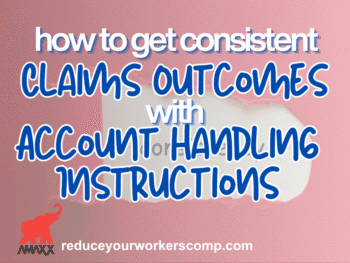
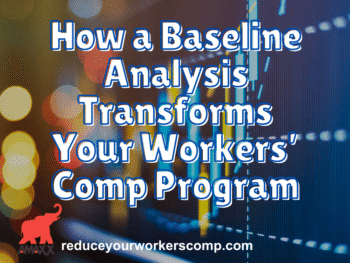

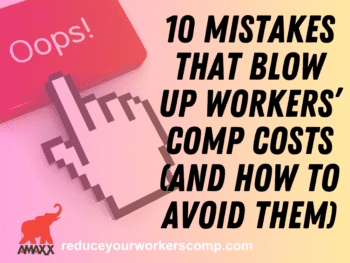
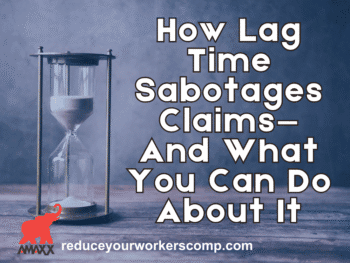
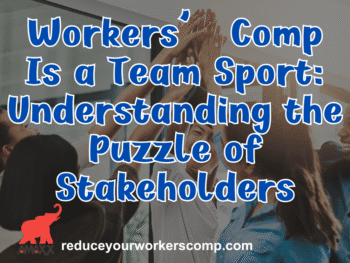
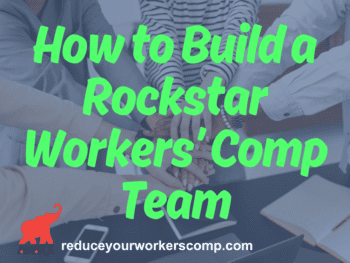




This was a good deal for both sides. Unfortunately so many players not directly involved have inserted themselves into the process that the original parties are both left wondering how it has become so complex and expensive.